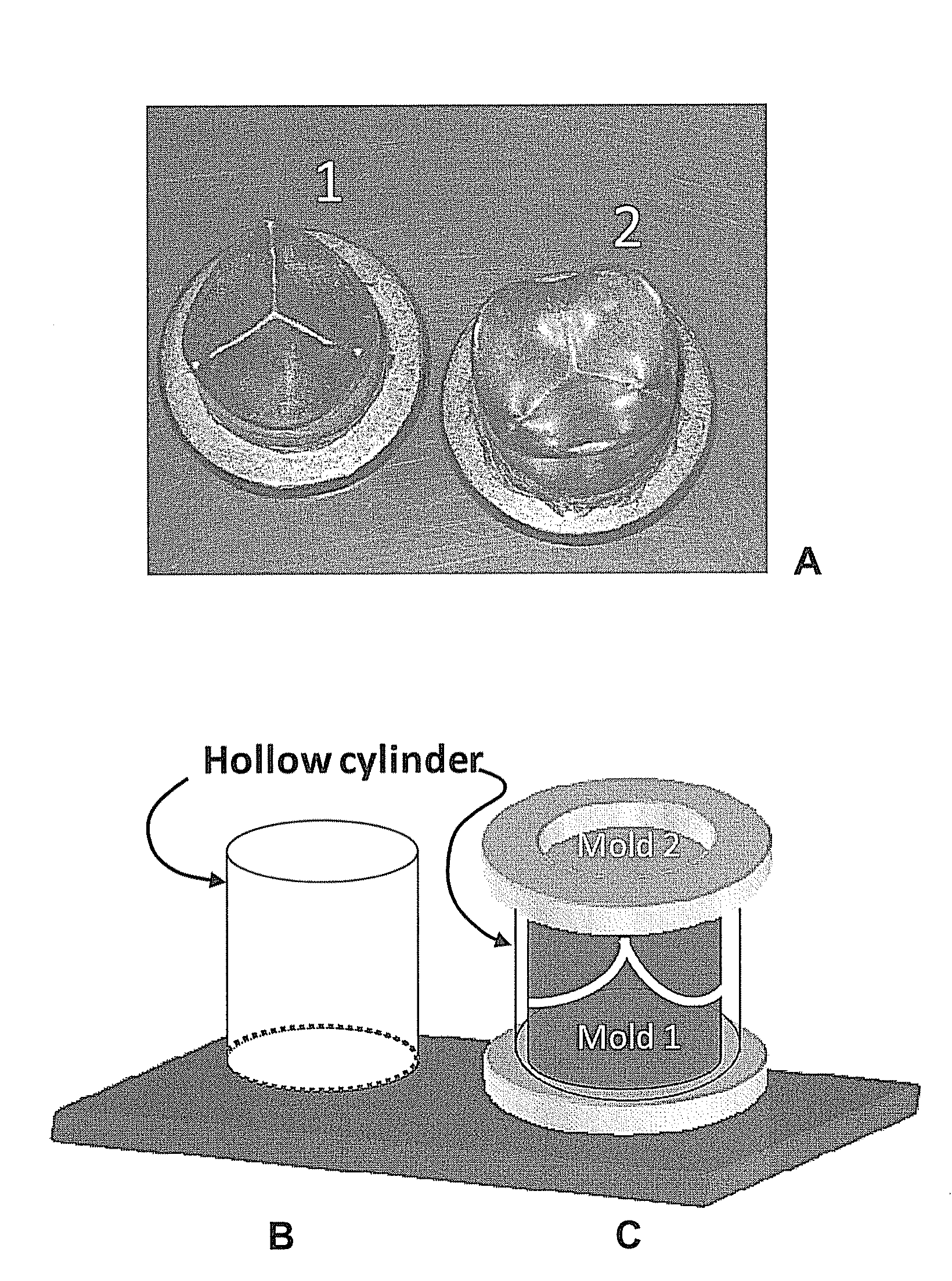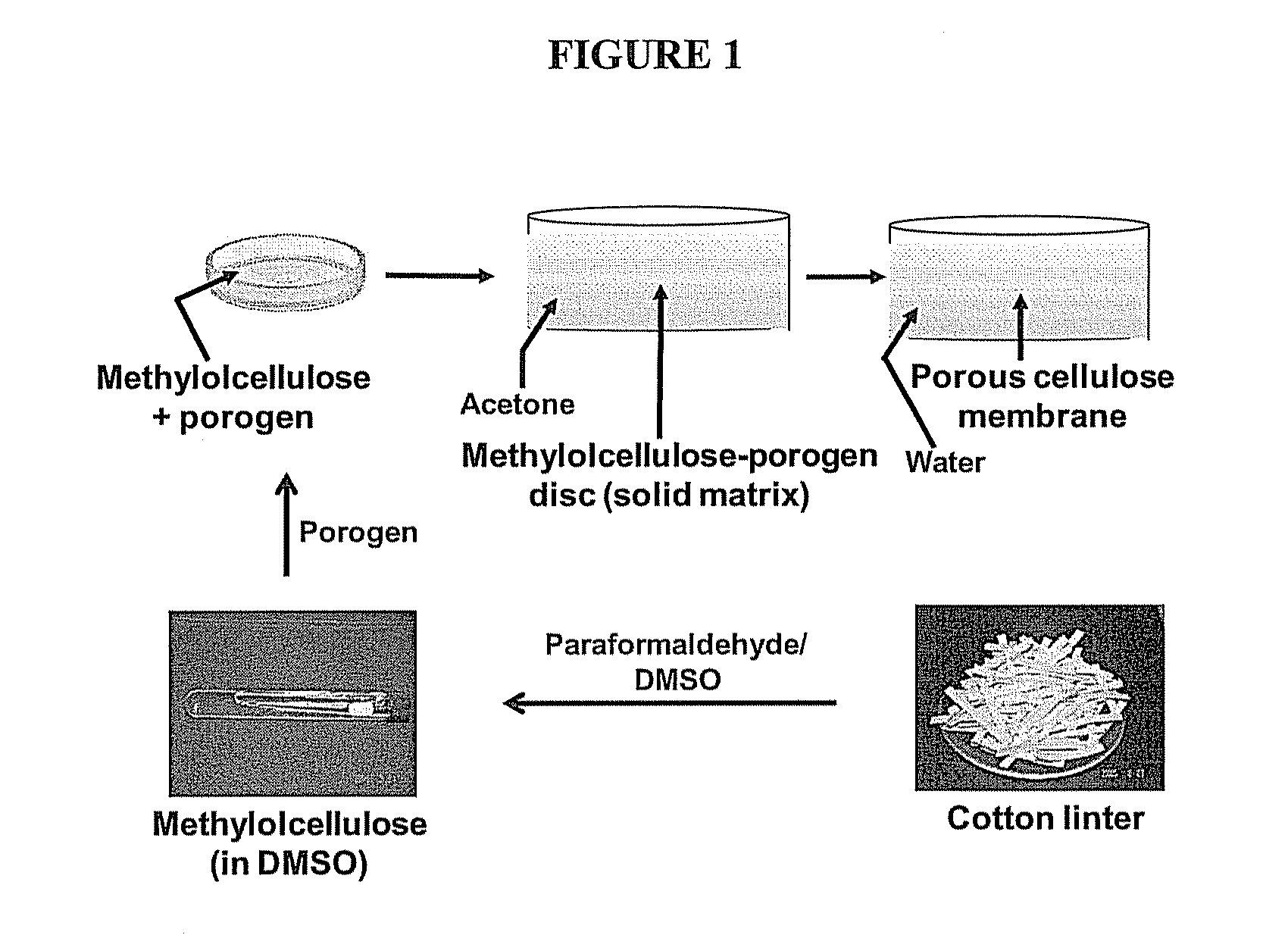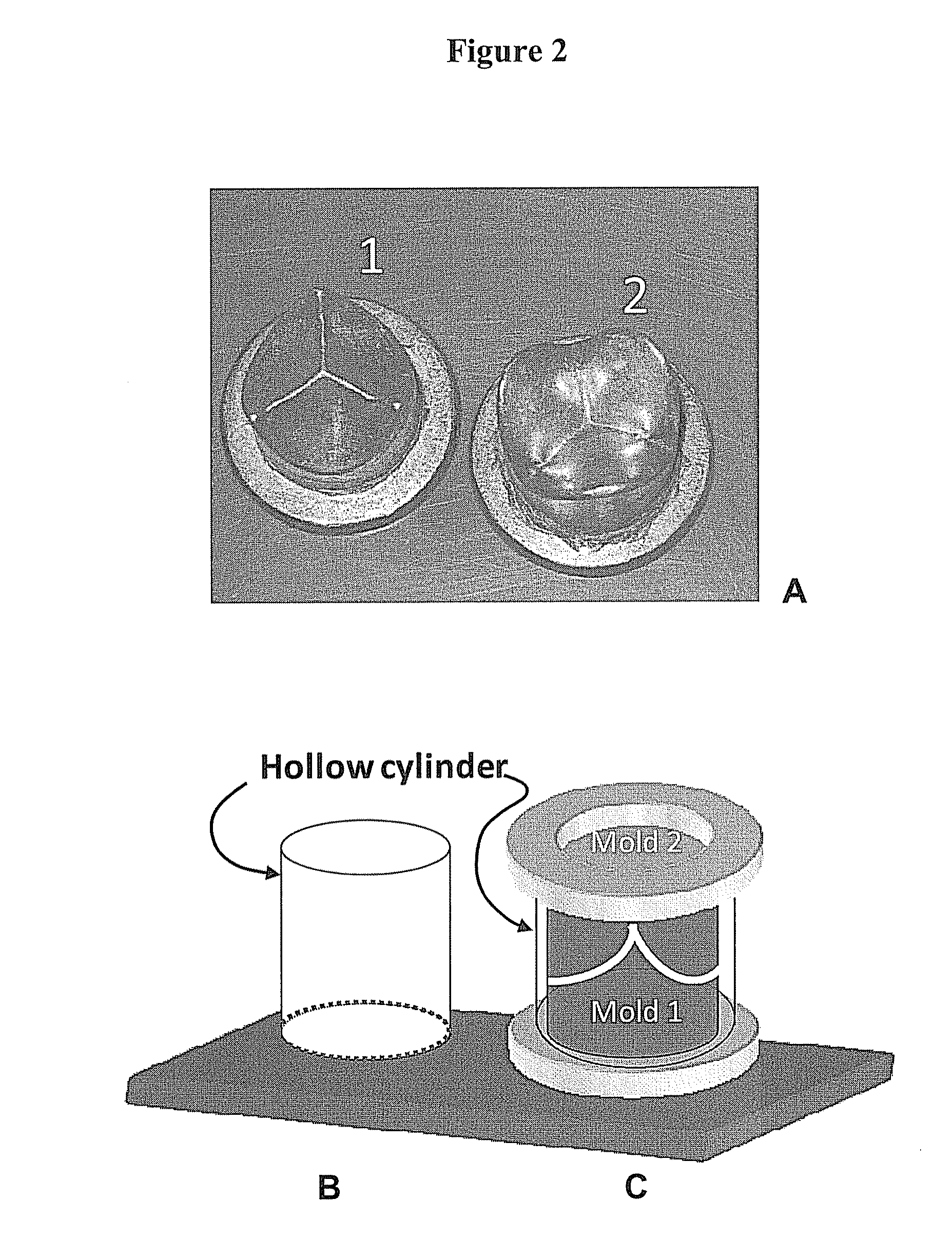Cellulose Based Heart Valve Prosthesis
a heart valve and cellulose technology, applied in the field of medical devices, can solve the problems of thrombosis and calcification, red blood cells, heart failure,
- Summary
- Abstract
- Description
- Claims
- Application Information
AI Technical Summary
Problems solved by technology
Method used
Image
Examples
example 1
Preparation of Regenerated Cellulose Membranes
[0049]A general schematic of one embodiment for preparing porous regenerated cellulose (RC) membranes is illustrated in FIG. 1. Briefly, cellulose (cotton linter) was converted into methylolcellulose by treatment with paraformaldehyde in anhydrous dimethylsulfoxide (DMSO) at 120-140° C. To produce a porous membrane, the resulting highly viscous, opalescent methylolcellulose solution was mixed with a water-soluble porogen (for example, sodium chloride) and cast on a glass plate or in a petri dish. The glass plate / petri dish was then immersed in acetone for 24 hrs. This caused an immediate precipitation of methylolcellulose, forming a solid methylolcellulose-porogen matrix. The matrix was removed from the glass plate / petri-dish and placed in water until a free-floating, porous cellulose membrane is formed. Exposure to water regenerates cellulose from methylolcellulose, concomitant with the dissolution of the water soluble porogen (salt), l...
example 2
Construction of Heart Valve Prosthesis
[0050]For constructing the porous heart valve prosthesis, a mold and a hollow cylinder pair were used (see, FIG. 2). The hollow cylinder was placed on mold (1). A thoroughly mixed methylolcellulose-NaCl mixture was then filled into the cylinder, ensuring that the mold stayed in the center. Mold (2) was then placed (face-down) on the open end of the cylinder and pushed until the mold's flange touched the edge of the cylinder (FIG. 2C). The whole assembly was placed in acetone for 72-120 hrs. This causes an immediate precipitation of methylolcellulose, forming a solid methylolcellulose-porogen matrix. The acetone soak caused methylolcellulose to precipitate and form a uniform methylolcellulose-NaCl matrix which, in this Example, conformed to the shape of an aortic heart valve.
[0051]The solidified methylolcellulose-sodium chloride (NaCl) matrix was removed and placed in water until a porous cellulose heart valve prosthesis was formed. The water was...
example 3
Cell Culture on Heart Valve Prosthesis
[0052]Myofibroblast cells and endothelial cells, isolated from human saphenous vein and expanded to five or six passages were used to study the cell culture properties of the cellulose based heart valve prosthesis. The cells were provided by Dr. Simon P. Hoerstrup (University of Zurich) and obtained following the general procedure reported by Hoerstrup et al. (Circulation, (2000) 102(19):44-49).
[0053]Myofibroblast cells were seeded by the conventional dripping method. Briefly, appropriate numbers of myofibroblast cells, equivalent to give 2×106 cells / cm2 of prosthesis, were suspended in a minimum volume of Advanced DMEM and then dripped onto the distal surface of the valve. Following incubation for 30 min, the proximal end of the prosthesis was seeded with equal number of myofibroblast cells. The valve was incubated again for 30 min and then transferred to a cell culture bottle. Approximately 300 mL of the advanced DMEM (containing 0.25% w / v asc...
PUM
| Property | Measurement | Unit |
|---|---|---|
| Time | aaaaa | aaaaa |
| Time | aaaaa | aaaaa |
| Angle | aaaaa | aaaaa |
Abstract
Description
Claims
Application Information
 Login to View More
Login to View More - R&D
- Intellectual Property
- Life Sciences
- Materials
- Tech Scout
- Unparalleled Data Quality
- Higher Quality Content
- 60% Fewer Hallucinations
Browse by: Latest US Patents, China's latest patents, Technical Efficacy Thesaurus, Application Domain, Technology Topic, Popular Technical Reports.
© 2025 PatSnap. All rights reserved.Legal|Privacy policy|Modern Slavery Act Transparency Statement|Sitemap|About US| Contact US: help@patsnap.com



